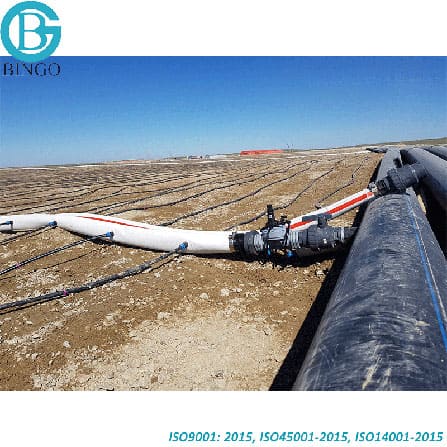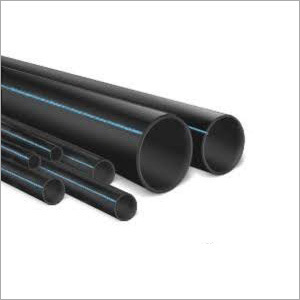Common Questions About Texas hdpe pipe manufacturer and Their Process
Wiki Article
The Necessary Actions for Effective Installation of HDPE Pipeline in Your Following Project
Effective setup of HDPE pipe requires cautious planning and execution. Key actions consist of assessing task demands, preparing the site, and picking proper joining strategies. Each stage plays an important duty in making certain the stability and efficiency of the pipe. Recognizing these important actions can greatly affect the overall success of the task - Pipe Supplier American Plastics Midland. Nonetheless, the nuances of each action might hold the key to getting over usual challenges faced throughout installmentComprehending the Conveniences of HDPE Pipeline
High-density polyethylene (HDPE) pipeline offers countless benefits that make it a favored choice for various applications. Its high resistance to corrosion and chemicals guarantees resilience sought after settings, considerably prolonging the lifespan of setups. Additionally, HDPE's adaptability enables easier installment, specifically in challenging surfaces, as it can bend without damaging. The lightweight nature of HDPE pipe streamlines transport and handling, reducing labor prices throughout installment.Additionally, HDPE pipeline is known for its low friction coefficient, which improves fluid flow and lessens power usage. Its smooth construction lowers the danger of leaks, adding to far better source management and ecological protection. On top of that, HDPE is recyclable, lining up with sustainable methods and lowering environmental impact. Generally, the combination of strength, adaptability, and eco-friendliness makes HDPE pipe a premium choice for a wide variety of jobs, from water distribution to industrial applications.
Planning Your HDPE Pipe Installment
When planning an installment of HDPE pipe, careful factor to consider of numerous crucial elements is vital to secure an effective project. Job managers have to analyze the specific needs of the pipe, consisting of the planned usage, circulation prices, and environmental conditions. Understanding these criteria will guide the selection of suitable pipe measurements and product grade.Next off, timelines need to be established, factoring in purchase schedules and any type of possible delays. Coordination with neighborhood authorities for licenses and governing compliance is additionally important. Furthermore, a thorough budget needs to be prepared, including all prices connected with materials, labor, and machinery.
It is crucial to engage a qualified group experienced in HDPE pipeline installation. Their proficiency will aid reduce risks, assurance adherence to sector standards, and ultimately contribute to the project's success. Detailed preparation prepares for a smooth installment process and durable efficiency of the HDPE piping system.
Preparing the Site for Installment
Proper site prep work is important for the successful setup of HDPE pipe. Prior to installation begins, the website should be completely assessed to ensure it meets all necessary needs. This includes surveying the ground for existing frameworks, energies, and prospective hazards that could restrain the installation procedure.

Right altitude and positioning must be developed to preserve a consistent slope for water drainage functions. Proper drain around the installation website is also crucial to avoid water accumulation, which can cause problems down the line.
Strategies for Signing Up With HDPE Pipes
Attaining a trusted connection between HDPE pipelines is essential for ensuring the stability and longevity of the installment. Different strategies exist for signing up with these pipes, each fit for various project demands. Combination welding is one of one of the most typical techniques, making use of warm to bond the pipe finishes with each other, developing a seamless and long lasting link. This method can be further categorized into outlet combination and butt combination, depending on the pipeline setups.Mechanical installations are another choice, employing clamps and threaded connectors to join areas of HDPE pipe. While usually faster to install, they might need extra maintenance over time. Electrofusion is a specialized technique that involves using electrical existing to warmth and fuse the pipes via particularly designed fittings, making sure a solid bond. Choosing the suitable signing up with strategy is vital, as it directly influences the general performance and dependability of the HDPE piping system in read more the designated application.
Checking and Assessment of Installed Piping
The testing and inspection of installed HDPE pipes are vital to ensuring their capability and longevity. This process incorporates visual inspection techniques, pressure testing methods, and leak detection procedures to recognize prospective issues. By using these techniques, professionals can confirm the stability of the installment prior to it is put right into usage.Aesthetic Evaluation Techniques
Employing reliable aesthetic assessment strategies is vital for assuring the integrity of mounted HDPE pipelines. Examiners should systematically analyze all noticeable sections of the pipe to recognize any type of indicators of damage, imbalance, or incorrect installment. Key indications to analyze include joint stability, surface area irregularities, and connections. Examiners might utilize devices such as amplifying glasses or electronic cameras to boost visibility and information. It is important to examine for indicators of environmental stress and anxiety, such as distorting or extreme bending, which could compromise performance. Regular paperwork of findings enables tracking changes over time and helps overview necessary repairs. By adhering to recognized visual evaluation procedures, project groups can notably lower the threat of future failings and assure long-term dependability of the piping system.Pressure Testing Methods
Visual examination functions as a preliminary action, yet it is not adequate on its own to guarantee the efficiency of installed HDPE pipelines. Pressure screening approaches are vital for guaranteeing the stability of these systems. Normally, hydrostatic testing is utilized, where the pipes are filled up with water and subjected to pressure levels over the desired operating pressure. This approach assists determine weak points or possible leaks. Pneumatically-driven screening can additionally be utilized, although it lugs higher dangers as a result of the compressibility of air. No matter of the technique picked, adhering to sector criteria and safety and security procedures is vital. After performing pressure tests, detailed documents is essential to verify the outcomes and verify that the installment fulfills all functional demands before continuing to the following stage of the task.
Leak Discovery Procedures
Just how can one guarantee that set up HDPE pipelines are devoid of leaks? Efficient leakage detection treatments are essential to secure the integrity of the system. Initially, aesthetic inspections need to be carried out, searching for indications of water build-up or dirt disintegration around pipeline joints. Following this, pressure screening can validate the system's strength. An usual approach is the hydrostatic test, where water is presented under stress, keeping track of for decreases that show prospective leaks. Furthermore, advanced modern technologies, such as acoustic sensing units or infrared thermography, can detect leaks that may not be noticeable. Routine monitoring and upkeep additional add to the durability of HDPE pipes, ensuring they remain leak-free throughout their operational life expectancy. Proper documentation of these procedures is crucial for compliance and future referral.Upkeep Tips for Long-Term Efficiency
To ensure the longevity of HDPE pipes, establishing a regular evaluation timetable is important. This positive approach permits for the very early detection of prospective problems, decreasing expensive repair work. Additionally, implementing appropriate cleaning techniques will certainly assist preserve peak performance and protect against accumulation that can influence capability.Normal Inspection Set Up
HDPE pipes are known for their durability and resistance to corrosion, establishing a regular evaluation schedule is important for guaranteeing their lasting performance. Routine examinations aid determine prospective issues such as leakages, joint honesty, and ecological effects that might affect the pipeline's functionality. It is recommended that inspections happen at the very least biannually, or more frequently in settings with severe problems. Pipe Manufacturing Midland TX. During these analyses, visual checks should be carried out to find signs of wear or damages. Furthermore, using innovation such as ultrasonic testing can provide additional understandings right into the pipeline's problem. By carrying out an organized inspection timetable, project managers can proactively address issues, thereby expanding the life expectancy of HDPE pipes and keeping system efficiencyAppropriate Cleaning Techniques
Correct cleansing techniques play a crucial function in maintaining the long-lasting performance of HDPE pipelines. Normal cleaning prevents the accumulation of particles, sediment, and biofilm, which can lead to clogs and decreased flow effectiveness. Operators should employ approaches such as high-pressure water jetting or foam cleaning to successfully get rid of contaminants without harming the pipeline surface. It is vital to avoid utilizing rough chemicals that might weaken HDPE material. Furthermore, arranged maintenance checks should include aesthetic evaluations for any indications of wear or damages. Effectively educated personnel ought to accomplish these cleansing processes, guaranteeing conformity with security and environmental guidelines. By implementing these methods, the life expectancy of HDPE pipelines can be considerably prolonged, making certain ideal performance throughout their operational life.Regularly Asked Concerns
What Are the Ecological Impacts of HDPE Pipe Manufacturing?
The environmental influences of HDPE pipe production consist of greenhouse gas emissions, energy consumption during production, possible plastic air pollution, and challenges in recycling. HDPE's longevity and resistance to corrosion can reduce some environmental concerns.How Does HDPE Pipeline Contrast to Other Products?

What Devices Are Necessary for HDPE Pipeline Installation?
Important tools for HDPE pipe installation include a blend equipment, pipeline cutters, shovels, determining tape, and safety and security equipment. Correct equipment warranties effective, safe handling and installation, adding to the job's total success and honesty.Exist Any Type Of Details Rules for HDPE Pipe Setup?
Specific laws for HDPE pipe installation differ by region, often controlled by local, state, or government codes. Compliance with these guidelines assurances security, environmental management, and functionality, making adherence essential for successful job end results.Can HDPE Water Lines Be Recycled After Usage?
Yes, HDPE pipelines can be reused after use. Their thermoplastic nature permits reprocessing, making them ideal for reusing into brand-new products. This sustainability element adds to ecological conservation and advertises circular economic climate methods in building.Report this wiki page